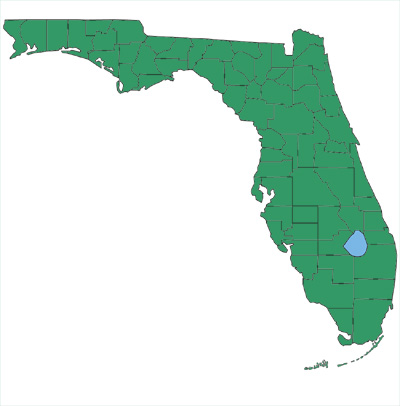Florida's Snakes
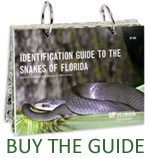
Cottonmouth or Water Moccasin
(Agkistrodon piscivorus)VENOMOUS
Venomous snakebites are rare and can usually be avoided; however, knowing how to respond correctly to venomous snakebites is also important. Learn more...

Banded OR

Solid-colored
Cottonmouth - banded
adult (upper image),
solid-colored adult (middle image),
and lighter-colored juvenile (lower image)
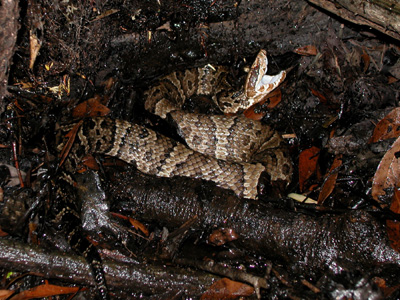
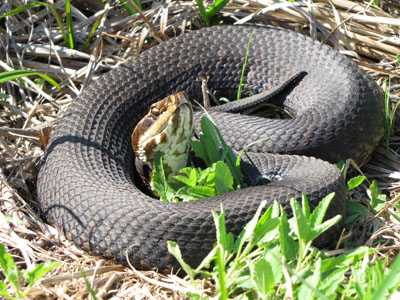
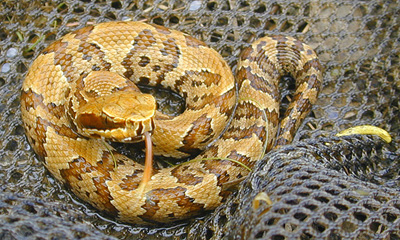
Photos by Dr. Steve A. Johnson (UF). These photos may not be used without the express written permission of the photographer.
Size:
Usually 2.5–3 ft. (max. ~6 ft.)
Identification:
Young Cottonmouths are marked with broad, splotched bands that fade with age, and have tails tipped with mustard yellow. Juveniles may be misidentified as Copperheads, which are only found in Florida in a small area of the panhandle. Thick body is reddish-brown to dark gray-brown; older individuals may be nearly solid black. Dark bands run from each eye to the corners of the jaw. When threatened, the Cottonmouth may coil and open its mouth wide, showing the cottony white interior. Scales have obvious lengthwise ridges (keels). This snake gives birth to live young (does not lay eggs).
Habitats:
Found throughout Florida in or near aquatic habitats, including ponds, lakes, streams, rivers, canals, ditches, cypress swamps, wet prairies, and brackish coastal marshes. It may be especially abundant in areas where wading birds congregate to breed. It is occasionally encountered in upland habitats away from water.
Diet:
Fish, frogs, snakes, turtles, young alligators, birds (and their eggs), mice, rats, squirrels, rabbits
Map by Monica E. McGarrity - may be used freely for education.
